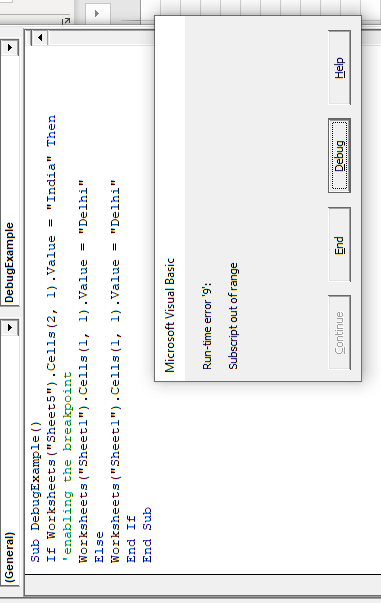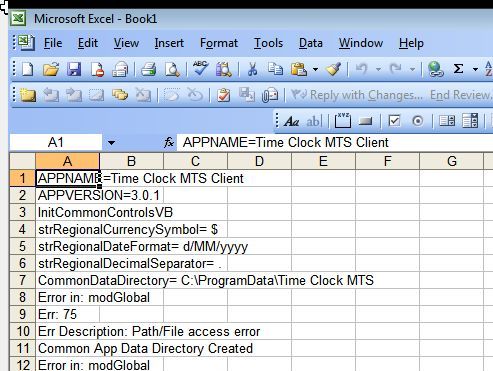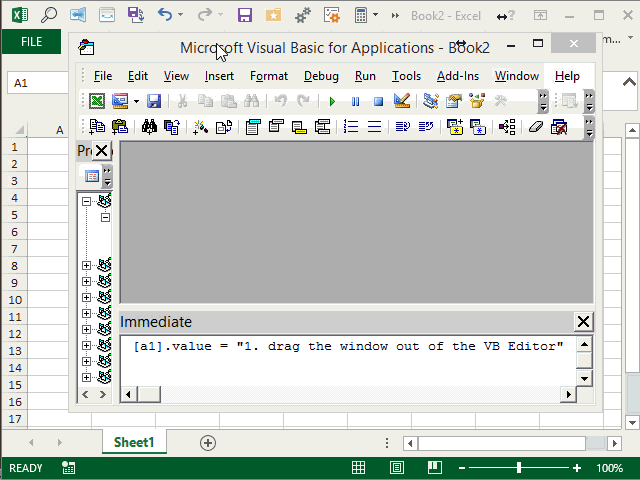

- #Ms excel debug mode how to
- #Ms excel debug mode install
- #Ms excel debug mode update
- #Ms excel debug mode code
- #Ms excel debug mode professional
Different row_no values may have unintended results Make sure the row_no values specified in updates_matrix are all the same for valid insert operation.
#Ms excel debug mode update
The source filename will not be overwritten, instead, the sheet after the update will be saved as this specified destination filename

Returns a list of dict with the following elements: debug: var=device_list.list # Show the excel sheet cell reference(s) where your search device was located Search_options: "iw" # "i" to ignore case, "w" for whole words Start_row: 2 # Search from row #2 till the end of the sheet (no end_row is specified) Start_col: 1 # Search only in the 1st column of the sheet So, to look for all routers in the sheet, use “r” as your search_device search token, this will list all devices starting with “r” or “R.” - name: Search Excel File If no sheet_name is specified, the module will look in the entire workbook.įor a partial-match, case-insensitive search, just use “i” in the search_options. The search_range options are optional, if omitted the module will look in the entire sheet. The “i” in search_options makes the search case-insensitive. Use search_excel to search the Excel document. The cell reference is specified in the read_range dict option. Use open_excel with read-only “r” operational mode (op:) to get the Loopback0 IP address shown in the Devices sheet. The Excel file has a list of device names, devices starting with “R” are routers, and devices starting with “S” are switches. module_examples/īelow, are another two basic Ansible examples to read and update Excel files. I am including the documentation at the end of this article for your reference.
#Ms excel debug mode code
The modules’ code has detailed usage documentation. The open_excel GitHub has two examples and a sample Excel file as a demo.


Using the Modules - Read Excel Sheet Content py files under your project directory “/library”. Use export $ANSIBLE_LIBRARY to check the configured library directory or look for the library variable in your /etc/ansible/ansible.cfg file. py files from the GitHub open_excel project directory and place the files under your Ansible modules directory. Or, you can do that manually by downloading the module.
#Ms excel debug mode install
To install openpyxl:įor open_excel, you can either install open_excel using pip: You need to have openpyxl installed before you use open_excel.
#Ms excel debug mode how to
I am therefore referencing the GitHub sources for two Python modules I put together, open_excel and search_excel, and will go over a couple of examples on how to use these two modules. The objective of this article is not to explain how the network device information is collected, but rather to focus on how to access the Excel sheet, read data from it, and write into it. The requirement is to collect certain IP and routing information from these 1000+ devices, verify the location and admin contacts (from the SNMP configuration), and save the collected information back into the same Excel sheet. We have an Excel sheet with a list of 1000+ network devices. There are many use cases one can think of, but mine is simple. I therefore had to write my own Ansible modules using Python to be able to manage Excel files. Unfortunately, there is no Ansible-native way I know of that can search and edit Excel files. While working on some Red Hat Ansible automation playbooks, I needed to open Microsoft Excel files from my Ansible playbook to search for content, add content, and update some parts of the sheet.
#Ms excel debug mode professional
Share on LinkedIn: By Mohamed Abouahmed, Kovarus Professional Services Engineer


 0 kommentar(er)
0 kommentar(er)
